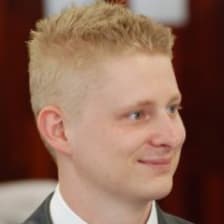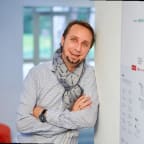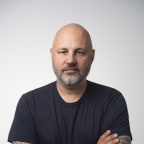TechLead-Story: Gerald Sigmund, CTO at DIG GmbH

Gerald Sigmund
Team
Size and Roles: The development team consists of ten members, including developers, testers, a Scrum Master, and an architect.
Organizational Structure:
- The team follows an agile Kanban methodology.
- Originally attempted Scrum but found Kanban better suited for flexibility and quick response to customer changes.
- Emphasis on frequent live deployments after completing features.
- Automated processes from Git commits to deployment eliminate manual steps.
- Full-stack development is encouraged, and team members have the opportunity to specialize.
Distinctive Aspects: Automation is a key feature, with automated deployment from Git to the respective systems, minimizing manual steps. Team members can specialize and contribute to both backend and frontend development.
Recruiting
Integration in Recruiting Process:
- A team member is always present during job interviews, allowing direct technical discussions with candidates.
- The team's agreement is necessary for a candidate to join.
Onboarding Procedure:
- New employees can choose between Mac and Windows.
- Initial pairing with experienced team members for quick knowledge transfer.
- Docker is used for provisioning development libraries and tools, ensuring a fast setup for new employees.
Qualities Beyond Technical Skills:
- Besides technical qualifications, a strong emphasis is placed on social skills.
- A friendly and familial atmosphere within the team is crucial.
- Evaluating a candidate's ability to solve problems collaboratively is an essential aspect of the interview process.
Technologies
Technical Challenges:
- Ensuring the platform's availability for customers, even during deployments, is a significant challenge.
Technologies in Use:
- The platform, developed for almost four years, employs a modern Microservice Architecture.
- Frontend technologies include AngularJS 1.x and Angular 8.
- Microservices are primarily developed using Grails (Java/Groovy) as a framework.
- Databases include MySQL, MariaDB, MongoDB, and Elasticsearch.
- Asynchronous events are processed with RabbitMQ.
- Transitioning to Kubernetes and Docker for enhanced scalability and management flexibility.
Evolution of Technology:
- The company initially started with Perl and PHP.
- Over the last 15 years, there has been a shift toward JVM languages and TypeScript for the current stack.
- Adaptation of Python and .NET for certain components.
Dev Interview Info

























